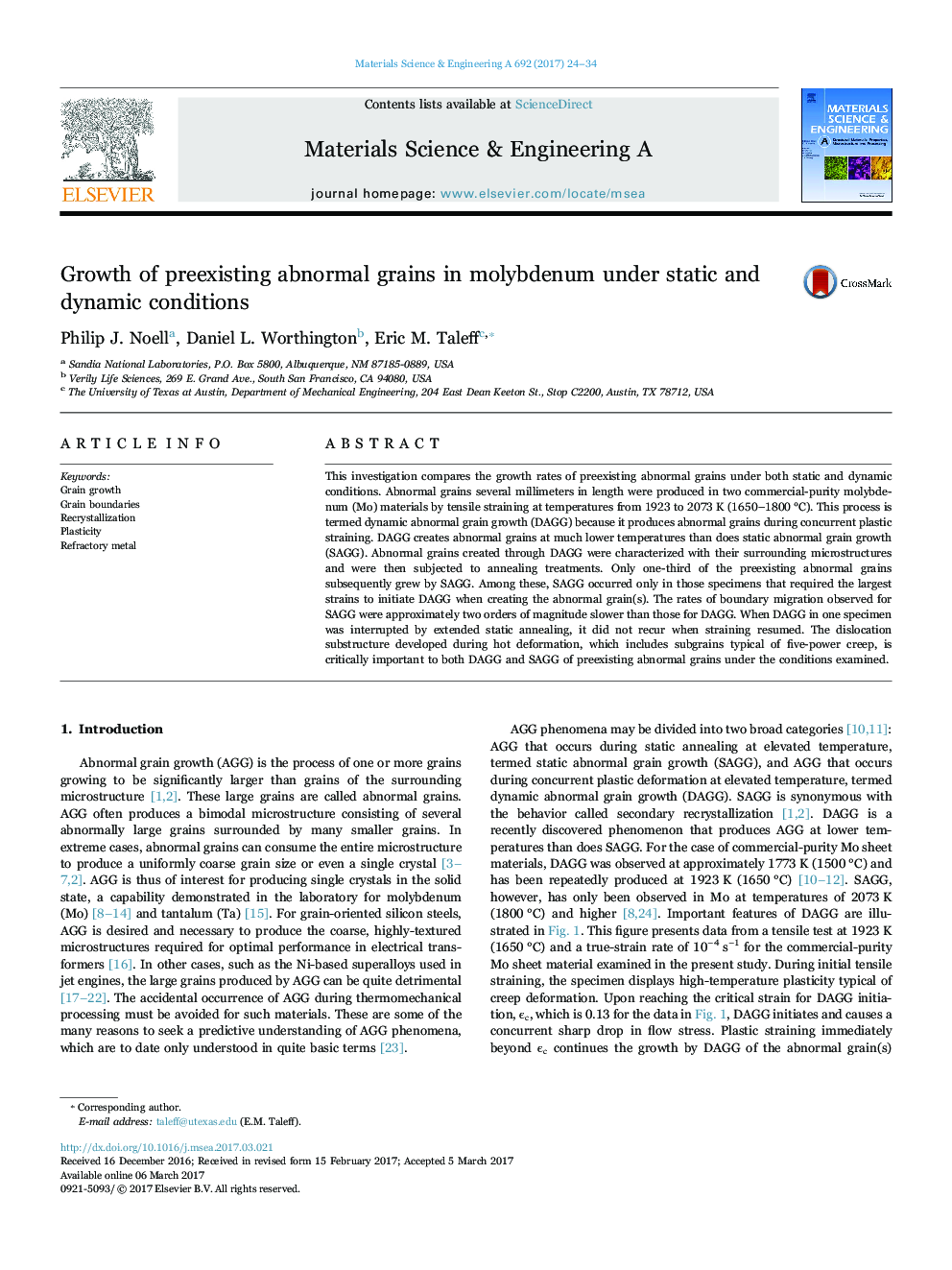| Article ID | Journal | Published Year | Pages | File Type |
|---|---|---|---|---|
| 5455783 | Materials Science and Engineering: A | 2017 | 11 Pages |
This investigation compares the growth rates of preexisting abnormal grains under both static and dynamic conditions. Abnormal grains several millimeters in length were produced in two commercial-purity molybdenum (Mo) materials by tensile straining at temperatures from 1923 to 2073 K (1650-1800 °C). This process is termed dynamic abnormal grain growth (DAGG) because it produces abnormal grains during concurrent plastic straining. DAGG creates abnormal grains at much lower temperatures than does static abnormal grain growth (SAGG). Abnormal grains created through DAGG were characterized with their surrounding microstructures and were then subjected to annealing treatments. Only one-third of the preexisting abnormal grains subsequently grew by SAGG. Among these, SAGG occurred only in those specimens that required the largest strains to initiate DAGG when creating the abnormal grain(s). The rates of boundary migration observed for SAGG were approximately two orders of magnitude slower than those for DAGG. When DAGG in one specimen was interrupted by extended static annealing, it did not recur when straining resumed. The dislocation substructure developed during hot deformation, which includes subgrains typical of five-power creep, is critically important to both DAGG and SAGG of preexisting abnormal grains under the conditions examined.
